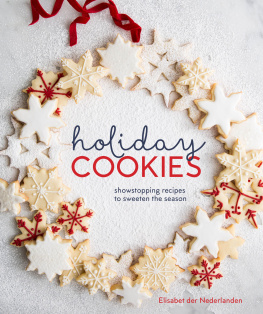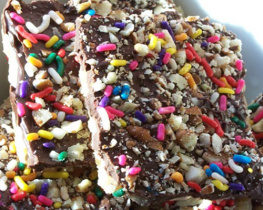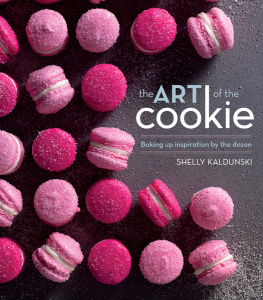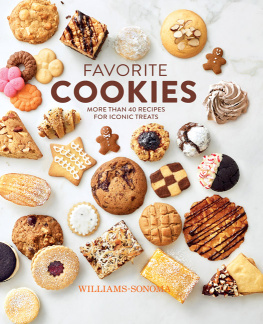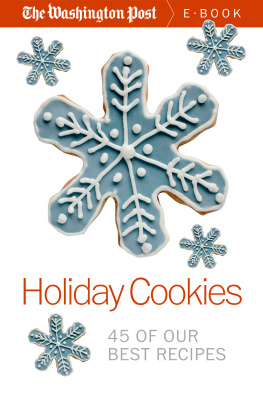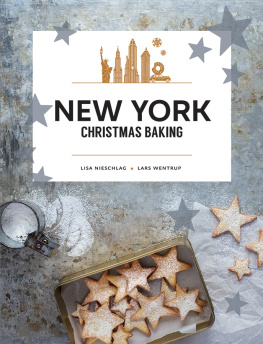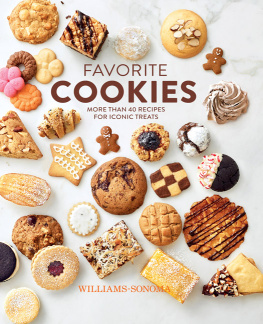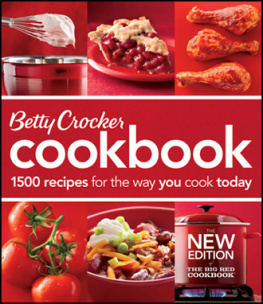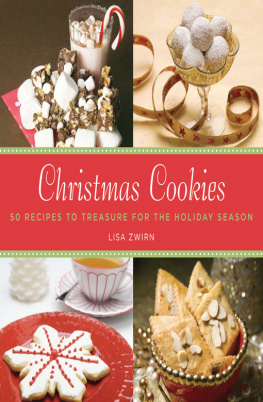SPECIAL INGREDIENTS
Butter: Always use unsalted butter in baking recipes, as it allows you to control the amount of salt. For the best flavor, purchase the best-quality butter you can; I always try to buy organic butter. For recipes in which butter plays a major flavor role, such as the Pain d'pices Shortbread Swirls (), I recommend European-style butter, which is higher in butterfat and thus imparts a richer flavor and warmer color to the cookies; find it at well-stocked supermarkets.
Chocolate cocktail bitters: These bitters carry deep, rich chocolate notes that add a welcome layer of intense flavor to chocolate cookies and confections. Look for chocolate bitters alongside cocktail bitters of other flavors at well-stocked liquor stores.
Cocoa powder: Made from cacao beans, cocoa powder comes in two main types, natural and Dutch process. Natural cocoa powder, which has been processed with its acidity intact, is used in recipes calling for baking soda, an alkaline that reacts with the acidity of natural cocoa to leaven baked goods. In contrast, Dutch-process cocoa powder, which has been washed in a solution to neutralize its acidity, is typically paired with baking powder, which is a mixture of an alkaline and an acid. Natural cocoa powder (sometimes labeled unsweetened cocoa powder or simply cocoa powder) is sharper flavored and lighter in color than Dutch process. Be sure always to use the type of cocoa powder called for in a recipe.
Dulce de leche : This richly colored milk caramel is made by slowly reducing sweetened milk to a jamlike consistency. It is available in jars and cans in Latin American grocery stores and in well-stocked supermarkets.
Eggs: Use large eggs for making the recipes in this book. I buy organic eggs from pasture-raised hens. Because of the diet and the care they receive, the chickens lay eggs with deeper-yellow yolks, which add both rich flavor and color to baked goods. Plus, I feel better using eggs from chickens who have been treated well.
Egg whites, pasteurized: This product, available in cartons in the refrigerated egg section of most grocery stores, is especially nice to have on hand when making Royal Icing (). A single carton usually holds enough whites to make five batches of icing, which should last you throughout the holiday season. I always purchase an organic product.
Food coloring: For the recipes in this book, I use liquid gel food coloring, which is more concentrated than old-fashioned water-based liquid coloring. That means less dye is needed, which reduces the risk of changing the consistency of the dough or icing you are tinting. Gel food coloring is readily available in most well-stocked supermarkets. Avoid using super-concentrated gel pastes, as it is easy to add too much. Powdered food dyes are also available and are fun to experiment with for tinting coarse decorating sugar.
Gelatin sheets: In Sweden, sheet gelatin is often preferred over powdered gelatin for thickening everything from a mousse to a parfait. In this book, I use the sheets for the windows on the gingerbread house (see ), as their subtle texture and light golden hue look beautiful. Look for gelatin sheets in specialty food stores and online; each sheet should measure 9 by 3 inches.
Golden syrup: Although this thick, amber sweetener is a UK product, it can be found in the United States in well-stocked markets and online. I recommend Lyles brand syrup, which comes in a green-and-gold can or plastic bottle.
Salt: I use kosher salt in my batters and doughs because of its gentle, well-rounded, pure salt flavor. Diamond Crystal, my preferred brand, has a fairly fine grain, though not as fine as table salt. Coarser kosher salts would not as work well in baking. If you like, you can substitute a fine sea salt for kosher salt in the recipes. I have found that table salt has both a stronger salt flavor than kosher salt and an aftertaste. If you do opt to use table salt, be sure to use slightly less, as it measures differently. A flaky sea salt, such as Maldon or fleur de sel, is typically sprinkled on top of cookies, confections, and bars just before baking, delivering a clean, natural taste and a bit of crunch.
Sugars: A number of different types of sugar are used in this book, though most of them, including granulated, confectioners, golden brown, and dark brown, are well known and easy to find in supermarkets. Coarse decorating sugar, sometimes called sanding sugar or coarse sugar, is admired for its oversized, attractive granules and crunchy texture. It is available in a variety of colors. Large-grained, pale amber Demerara sugar, used as a finishing sugar, is often dubbed raw but is actually minimally refined and has a mild toffeelike flavor and crunchy texture.
RESOURCES
Country Kitchen SweetArt
Cookie cutters, sugar pearls, drages, jimmies, sprinkles, and coarse decorating sugars
countrykitchensa.com
(260) 482-4835
Designer Stencils
Cookie stencils
designerstencils.com
(800) 822-7836
King Arthur Flour
Flours, chocolate, spices, and decorating sugars; baking tools such as cookie presses, candy thermometers, pastry bags and tips, and cookie scoops
kingarthurflour.com
(800) 827-6836
Michaels
Cookie cutters, stencils, baking sheets, cellophane bags and wrap, stickers, ribbon, and twine
michaels.com/baking
(800) 642-4235
Oaktown Spice Shop
Large selection of spices
oaktownspiceshop.com
(510) 201-5400
Penzeys Spices
Large selection of spices
penzeys.com
(800) 741-7787
Spun Sugar
Chocolate, gel food colorings, cookie cutters, cake and cookie boxes, and cake box twine
spunsugar.com
(510) 843-9192
1611 University Avenue
Berkeley, CA 94703
Sur La Table
Rolling pins, cookie cutters, pastry brushes, pastry wheels, and baking sheets
surlatable.com
(800) 243-0852
ACKNOWLEDGMENTS
Im forever thankful to the team at Ten Speed Press for publishing this book and guiding me through the process. I want to give special thanks to executive editor Jenny Wapner, who was my first contact and got me started and through the beginning steps of writing; and to art director and designer Ashley Lima, whose hard work on this book makes me so happy and grateful and who has a fantastic eye for style and design.
Kim Laidlaw, my editor, you are amazing! Thank you for your enthusiastic support and talent. You made the process so joyful. I am also very appreciative of all the work done by copyeditor Sharon Silva, proofreader Elisabeth Beller, and indexer Elizabeth Parson.
The incredibly talented photographer Erin Scott, who shot this book, was a joy to work with, and her assistant Nick Wolf always brought humor, helpfulness, and his sunny personality to the set. Thank you to Heidi Ladendorf, my assistant and right-hand woman in the kitchen; Im so grateful for all her encouragement while I was writing the book as well as her invaluable help at the photo shoot.
To all my friends who cheered me on while writing and testing recipes for this book and for everyone who helped taste test: thank you!
A huge thanks to my parents for all their ongoing support and encouragement and a special thank-you to my father who stayed with us when a big part of this book was being written and testedhe helped in the kitchen and gave me his honest critique of the cookies.
And finally, my love and gratitude go to my husband, Yanay, and our son, Mattias, for being great sports during this project and never saying no to tasting yet another version of a cookie.
CHAPTER 1

very merry classics

